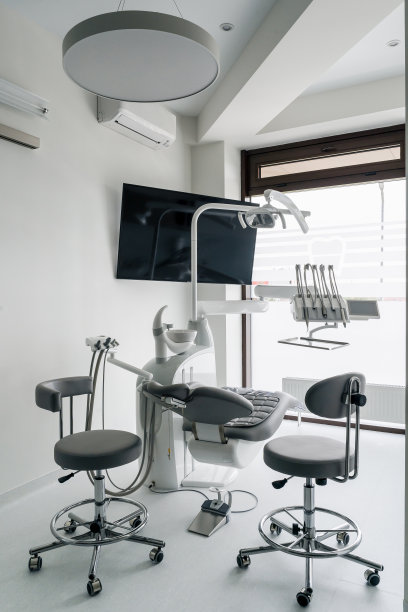The Journey of Extracting a Tooth Understanding the Procedure Recovery and Aftercare Benefits and Risks Explained
Summary: The journey of extracting a tooth can be daunting yet is often necessary for better oral health. This article delves into four critical aspects: understanding the procedure, recovery and aftercare, as well as the associated benefits and risks. By breaking down these elements, readers can gain a comprehensive understanding of what to expect. From recognizing when extraction is the best option, to ensuring proper recovery and knowing the potential pitfalls, each component plays a vital role in successful dental care. Through this exploration, individuals can approach tooth extraction with informed confidence, reducing anxiety and promoting effective healing.
Understanding the Tooth Extraction Procedure

Tooth extraction is the right choice in various situations, such as severe tooth decay, gum disease, or overcrowding. During the first step, a dentist will take an X-ray to evaluate the tooths condition and the surrounding bone structure. This imaging helps in formulating an effective extraction plan tailored to the patient. Once the dentist has devised a plan, they explain the procedure in detail, alleviating any concerns the patient may have.
After the preliminary discussions, the actual extraction begins. The patient is typically given a local anesthetic to numb the area surrounding the problematic tooth. Sometimes, sedation may be used for anxious patients. The dentist will then use specialized instruments to loosen the tooth and remove it from its socket, a process that might involve breaking the tooth into fragments for easier extraction. Post-procedure care instructions are provided to the patient before they leave the clinic.
Understanding the overall process helps patients feel more at ease. Knowing that extractions, when deemed necessary, are a standard part of dental care allows individuals to participate actively in their oral health management. This awareness not only reduces anxiety but also encourages patients to seek necessary treatment promptly.
Recovery and Aftercare Guidelines
After the tooth extraction, the recovery phase is crucial for minimizing discomfort and promoting healing. Initially, it is essential for patients to bite down on a gauze pad for at least 30 minutes to control bleeding. Swelling is common, and patients are generally advised to apply an ice pack to the outside of the cheek intermittently during the first 24 hours.
Diet plays a significant role during recovery. Soft foods should be prioritized for the first few days, avoiding anything that could irritate the wound or lead to complications. Staying hydrated is important, but patients should refrain from using straws, as the sucking action may dislodge blood clots necessary for healing.
Following the dentist’s aftercare instructions is vital. Medications prescribed for pain management must be taken as directed. If unusual symptoms like excessive bleeding or severe pain arise, contacting the dentist is imperative. This close monitoring of recovery helps prevent complications, ensuring a smoother healing process.
Benefits of Tooth Extraction
The benefits of tooth extraction often outweigh the fears associated with the procedure. One significant advantage is the alleviation of pain caused by tooth decay or infection. Removing a problematic tooth can provide immediate relief and prevent further oral health issues from developing.
Another benefit is improved oral hygiene. Certain dental problems, especially those stemming from overcrowding, can complicate brushing and flossing efforts. Extricating problematic teeth can facilitate better access to remaining teeth, making oral care easier and reducing the risk of future complications.
When extractions are necessary before orthodontic work, they can play a vital role in achieving a healthy, aligned smile. The removal of certain teeth can create space, allowing for more effective and efficient orthodontic treatment. In this context, tooth extraction is a proactive step toward a healthier dental future.
Risks Associated with Tooth Extraction
While the benefits of tooth extraction are many, it’s essential to recognize the associated risks. One of the most common complications is dry socket, a painful condition that occurs when the blood clot at the injection site dislodges prematurely. Dry socket can prolong recovery and requires additional treatment to manage pain and facilitate healing.
Other complications can include infections, particularly if proper aftercare isn’t followed. Bacterial infections at the extraction site can complicate recovery and lead to the need for antibiotics or further dental intervention. For patients with certain health conditions, the risk of infection may be higher.
Lastly, changes in bite or alignment can occur post-extraction, especially if multiple teeth are removed. When teeth shift to fill gaps, this can impact jaw function and necessitate orthodontic adjustments. Discussing these potential risks with a dentist beforehand can help patients make informed decisions.
Summary:
The process of tooth extraction, while sometimes daunting, ultimately serves as a crucial tool for maintaining oral health. Understanding the procedure, following recovery guidelines, recognizing its benefits, while being mindful of potential risks, empowers patients to approach their dental care positively.
This article is compiled by Vickong Dental and the content is for reference only.



